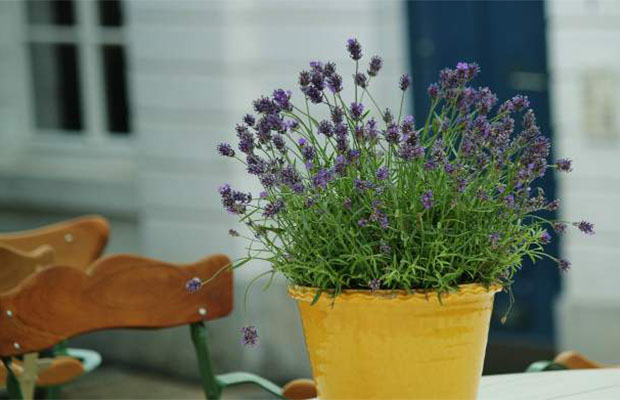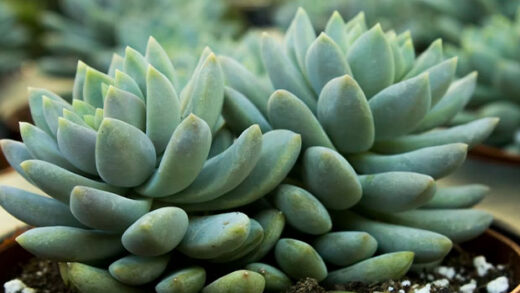But for them to thrive outside, it needs to be very warm and sunny. If your weather just won’t do, you may wonder about can you grow lavender indoors.
Not all lavender plants grow well in containers in the living room. However, some do, and if you select carefully among indoor lavender varieties, you’ll soon be singing the praises of growing lavender plants inside.
It can be difficult to grow it indoors, so use the advice we’ve provided below for the best results.
Table of Contents
Can You Grow Lavender Indoors?
Most lavender varieties thrive as outdoor plants in hot, Mediterranean-style climates, where they naturally grow. You might think about installing lavender as a houseplant if you reside in a fog belt or don’t have enough space in your backyard.
One of the best indoor plants overall, lavender can be grown indoors and has a variety of health advantages. According to research, lavender plants have a calming effect that can help with headaches, depression, and stress.
Additionally, a lot of common houseplant pests and household pests detest its potent scent, making it the perfect addition to a collection of houseplants to keep your home free of unwelcome infestations.
For more lavender information, read our posts below:
Which Lavender is Best for Indoors?
French lavender is the best variety for a healthy plant when growing lavender indoors. The French variety of lavender blooms for a longer period of time than most other varieties and is a hardy plant that can easily withstand temperature fluctuations, such as those found in your home.

How to Take Care of Lavender Plant Indoors?
Lavender is a relatively simple plant to care for indoors; watering is only necessary when the top few inches of soil feel dry to the touch. To avoid standing water after watering, empty the drainage tray after thoroughly soaking the soil and letting it drain.
The most crucial aspect of caring for lavender plants indoors is making sure they receive enough light. The best location for lavender is a south-facing window where it can receive at least three to four hours of daily direct sunlight. Rotate your plant every few weeks for even flowering to ensure even growth. If your plant isn’t getting enough sunlight, you might notice weak, spindly stems, and it might be more prone to illness.
Also Read:
Tips for Growing Lavender Indoors
- Give your plant as much sunlight as you can. A window that faces south is a great choice.
- Pot in quick-draining soil. Lavender does best in a rocky, well-draining soil. Make use of limestone as a supplement to regular potting soil.
- Try your hand at a smaller variety. There are a lot to pick from, but we suggest trying French lavender.
- Give your plant time to acclimate to your home, especially if it has spent a long time outside.
- Add alkaline to your soil. Once per month, mash up eggshells and incorporate them into the soil’s top layer. You might also consider sprinkling some lime into the mixture.
- Plant your lavender in a terra cotta pot. Terra cotta, which dries quickly, contributes to the Mediterranean atmosphere.
- Rotate the pot every time you water. This guarantees even growth from every angle.
- Repot after one year or in early spring into an 8&Utilizing high-quality potting soil, prime and plant.
The Don’ts of Growing Lavender Indoors
- Overwater. After becoming waterlogged, lavender plants have a hard time recovering. Less is more!
- Roast your lavender plant in the winter. Yes, lavender enjoys heat; however, in the winter, it shouldn’t be blasting heat from an air exchange. The plant can survive in a colder environment and will be prepared to push new growth in the spring.
- Forget to do your research. Some varieties of lavender, like “Lady” and “Munstead,” are more suited for culinary use. The flavor of lavender will improve with increasing sweetness.Water over the top of the plant. Directly squirt the water onto the ground. The plant’s foliage could become infested with mold and pests if water was sprayed on it.
- Let your pets consume a large amount of lavender. Contradictory information can be found, despite the ASPCA’s warning that all species of lavender are only mildly toxic to cats and dogs. Although lavender is not toxic to animals, according to The Nest, consuming it might still result in a mild gastrointestinal upset.
Read More: How to Propagate Lavender from Cuttings
FAQs
How Do You Keep Lavender Alive Indoors?
For indoor growing, lavender should receive as much light as possible. The best place for it to grow is in a south-facing window or somewhere that can receive at least three to four hours of daily direct sunlight. For even growth and flowering, turn the pot every week.
How Long Does Lavender Take to Grow Indoors?
It takes 30 to 90 days to germinate lavender seeds, then another 2 months to grow the plants to transplant size. In six weeks or less, roots will usually appear on lavender cuttings.
Is Lavender Easy to Take Care of Indoors?
Coming from the Mediterranean region, lavender is a good plant to grow indoors because it does well in pots and doesn’t need that much attention or maintenance. With their purple flowers and clean scent, lavender plants can also brighten your home.
Final Words on Growing Lavender Indoors
It’s critical to choose a suitable container and healthy soil when you want to grow lavender indoors. For lavender, choose a pot that is no larger than a few inches (8 cm).) larger than the plant’s rootball.
The plant prefers small spaces, and extra soil can easily remain wet. Verify that there are plenty of drainage holes in the pot. Add some sand, perlite, and compost to a light, well-draining potting mix. To shift the soil toward alkaline, add a little lime. It can be kept from becoming acidic by regularly adding crushed eggshells.
Read More:

















